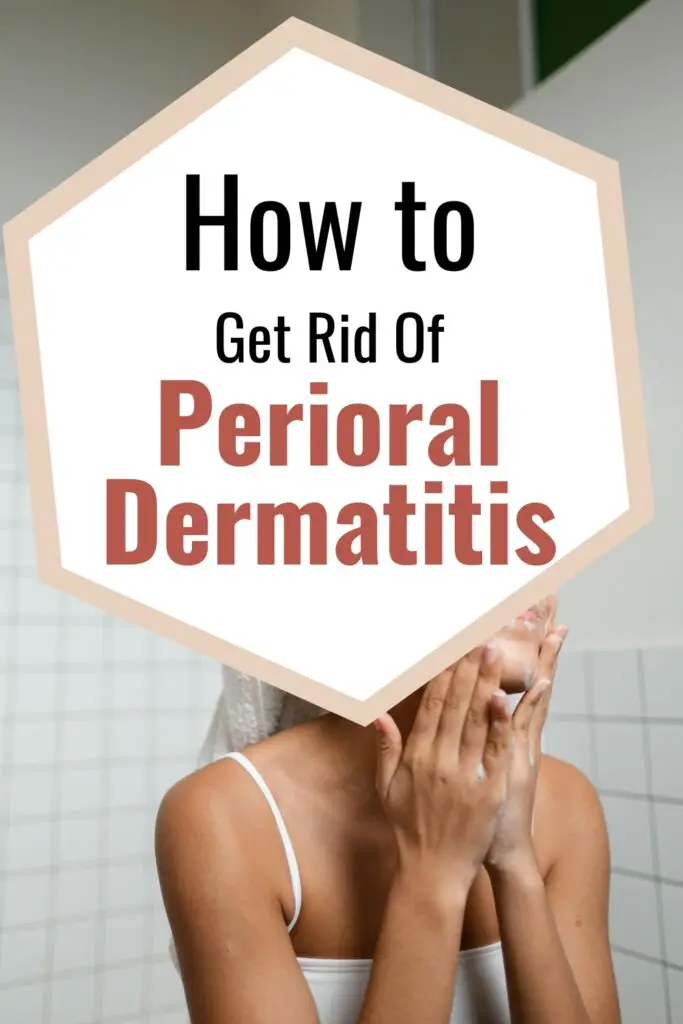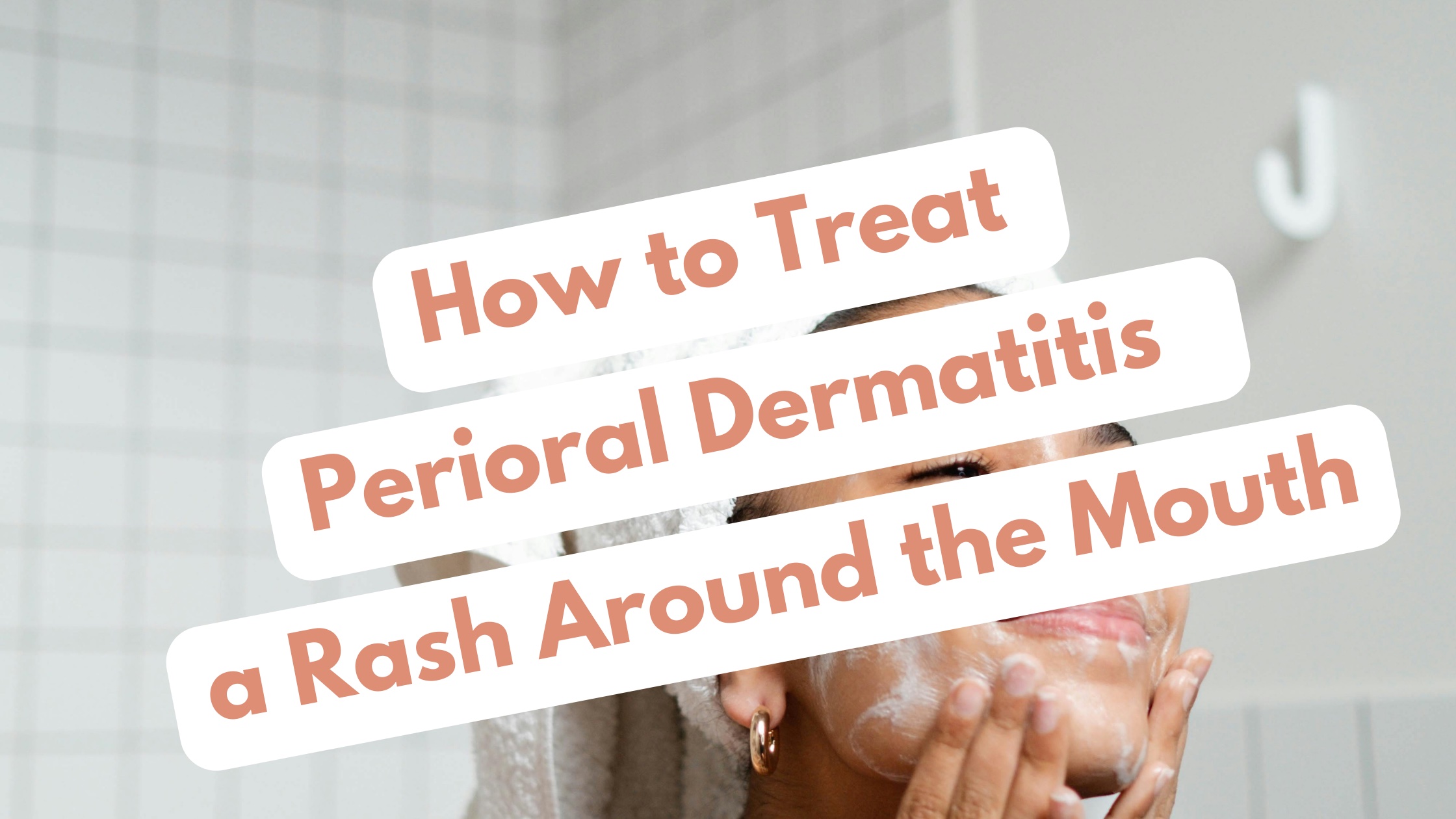Have you experienced an acne-like rash around the mouth that doesn’t seem to want to go away no matter what you try over the counter? You may be experiencing perioral dermatitis. This rash typically presents as acne-like and dry and flaky around the mouth but can also occur around the nose or eyes. Periorificial dermatitis is when the rash is around the nose or eyes. It can be asymptomatic or there may be a burning sensation associated with the rash. Perioral dermatitis is a fairly common skin condition I see and treat in dermatology. I am going to discuss who is at risk, what you may be unknowingly doing that’s causing it, and what the typical treatments are. This post will also go into a few possible differential diagnoses- what else it could be.
Who is at risk for perioral dermatitis
Perioral dermatitis almost exclusively affects females anywhere from their late teens to early 30’s. Although it can also affect children and some males. It is typically due to a topical steroid (think hydrocortisone). For example, someone may have been prescribed a topical steroid because they have eczema and used that medication for an itch on the face. They then could have developed a rash and continued to apply the hydrocortisone causing a cycle that is hard to stop. If someone has been using a topical steroid on their face for a while, when they stop it the rash almost always gets worse. This is known as a steroid withdrawal effect and there are non-steroidal medications that help if that is something you may be experiencing.
Other times perioral dermatitis could be due to a certain makeup product or too thick of an occlusive moisturizer. If you think this may be you then make sure you stop the product and then in the future ensure all of your makeup says non-comedogenic (safe for acne-prone skin). I have also seen toothpaste especially very minty toothpaste or a recent fluoride treatment cause this type of rash. The good news is once you stop the offending agent and are started on the correct treatment, it should improve if not completely disappear within a few weeks.
Typical treatments for perioral dermatitis
A topical and or oral antibiotic is likely necessary to treat the perioral dermatitis. This is dependent on the severity of the condition as well as other factors including the age of the patient, allergies, and medical background. First things first though. You have to stop whichever product is causing the rash in the first place. Once again, if you are using a topical steroid you should expect the rash to worsen before it improves. Non-steroidal anti-inflammatories like tacrolimus and pimecrolimus can be helpful in the case of a steroid withdrawal flare. Just be warned, a lot of patients experience a burning sensation when they apply these medications.
Topical antibiotics that are normally used for the treatment of perioral dermatitis include metronidazole, erythromycin, and clindamycin. They are normally applied a few times a day to clean skin. Sometimes oral medications are necessary to calm down more inflamed cases of perioral dermatitis or cases that are unresponsive to topicals. The oral antibiotics most commonly used are tetracyclines which include doxycycline and minocycline. These medications can have potential side effects like stomach upset, photosensitivity, esophageal irritation, and discoloration of the skin.
Treatment may take only a few weeks but other times it can take 2-3 months before someone reaches complete clearance of their rash. I usually recommend my patients against using any other products while trying to treat their perioral dermatitis besides whichever medication I prescribe. This is because another offending agent could increase the length of the necessary treatment to reach full clearance. Gentle cleansers for sensitive skin are typically fine to continue using. If you develop perioral dermatitis once you may be prone to recurrence at some point.
Other possible causes of your rash
Other common skin conditions that can cause rashes around the mouth include acne, rosacea, seborrheic dermatitis, allergic contact dermatitis, angular cheilitis, and folliculitis.
You can read more about each of those medical conditions below:
5 Skin Conditions That Can Cause Acne-Like Bumps That Most People Don’t Know About
The Dos and Don’ts of Treating Rosacea
3 Steps to Remedying and Annoying Skin Allergy Rash and Itching
3 Common Causes of Lip Pimples and How to Treat Them
When in doubt stop any products you’re currently using on the face and seek out a dermatology medical provider for treatment. Do you have any questions about the diagnosis of perioral dermatitis? Have you experienced it before? Let me know in the comments below!
Disclaimer: Opinions expressed are solely my own and do not express the views or opinions of my employer. Information on this website is for education and entertainment purposes only. Content is my opinion. It is not substituted for your own doctor’s medical care or advice. One should not make any health or medical-related decisions based in whole or in part on any content on this site. Content is not intended to replace the services of a licensed, trained health professional. Content may not apply to you as an individual. Although I will update my website with current information, this website is not a definitive guide to dermatology.





View comments
+ Leave a comment